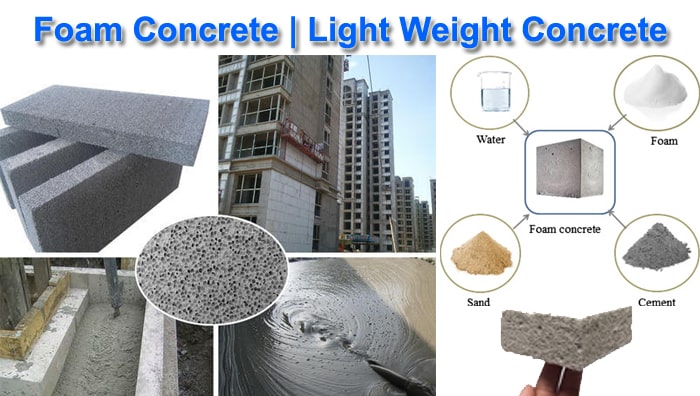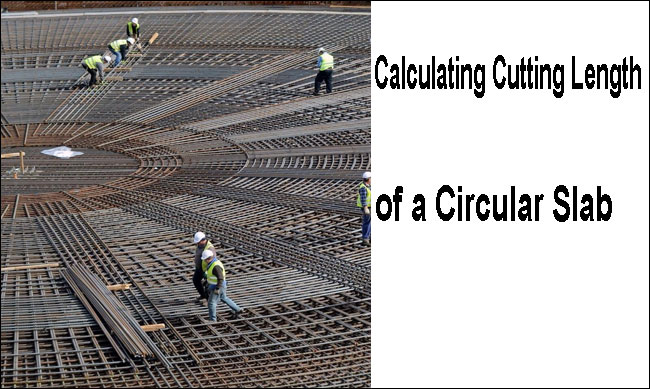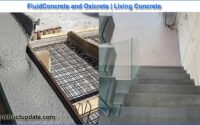Foam Concrete | Lightweight Concrete Application, Advantages, Disadvantages
What is Foam Concrete, and how does it work?
Lightweight concrete, such as foam concrete, is a type of lightweight concrete. By inserting stable voids in hardened cement paste, the density of the concrete can be lowered. Air or gas can be used to create voids. Because a foaming ingredient is used to incorporate air into the concrete, it is known as foam concrete.
The low density of foam concrete, which ranges from 300 to 1600 kg/cubic metre, helps to reduce the structure’s dead weight.
Foam concrete has a compressive strength of 0.2 to 18 MPa.
It is widely employed in the fields of thermal insulation, sound absorption, and fire resistance due to its textural surface and mono-structural cells.
Low-density concrete is sometimes known as self-compacting concrete.
Foam Concrete Production:
The foamed concrete, also known as lightweight concrete, is made by diluting surfactants in water and running it through a foam generator, which forms a stable structural foam. The foam formed is blended into the cementitious mortar or grout to produce the foamed quantity of necessary density. These surfactants are also used in the production of low-density fillers.
Controlled Low Strength Material is another name for this type of material (CLSM). To get an air content of 15–25 percent, the foam is simply added to a mix of rich sand and low cement content. It’s worth remembering that some manufacturers sell low-density fillers as foamed concrete or lightweight concrete, so be wary.

For the manufacturing of foamed concrete, there are two main methods:
- Method used in-line
- Method of pre-foaming
Foam Concrete Mixture Specifications
The following variables influence the qualities of foam concrete:
- The amount of foam used
- The cement content of the mixture
- Materials used as filler
- The ages
The influence of the water-cement proportion on the qualities of foam concrete or lightweight concrete is very different from the impact of foam and cement content.
Advantages of Foam Concrete:
It is light in weight. The neighbouring substructure does not experience much vertical load.
It has minimal thermal conductivity and excellent sound insulation qualities that regular concrete lacks.
It’s resistant to freezing and thawing.
Foam concrete is a non-compacting, free-flowing concrete that doesn’t require any compacting. Foam concrete adheres to any subgrade contour when used in foundations or excavations.
Foam concrete can be easily pumped over a long distance with relatively little pressure.
Foam concrete is a substance that lasts a long time. It will not decay and will last as long as a rock.
Foam concrete has a low permeability coefficient.
Disadvantages of Foam Concrete
The compressive and flexural strength of foam concrete decreases as the density decreases.
Because foam concrete has a large amount of paste and no coarse material, it will shrink more than regular concrete.
Because it contains more cement than regular concrete. As a result, it gets pricey.
The linked pore to total pore ratio has a significant impact on the durability of foam concrete.
Foam concrete takes longer to mix.





